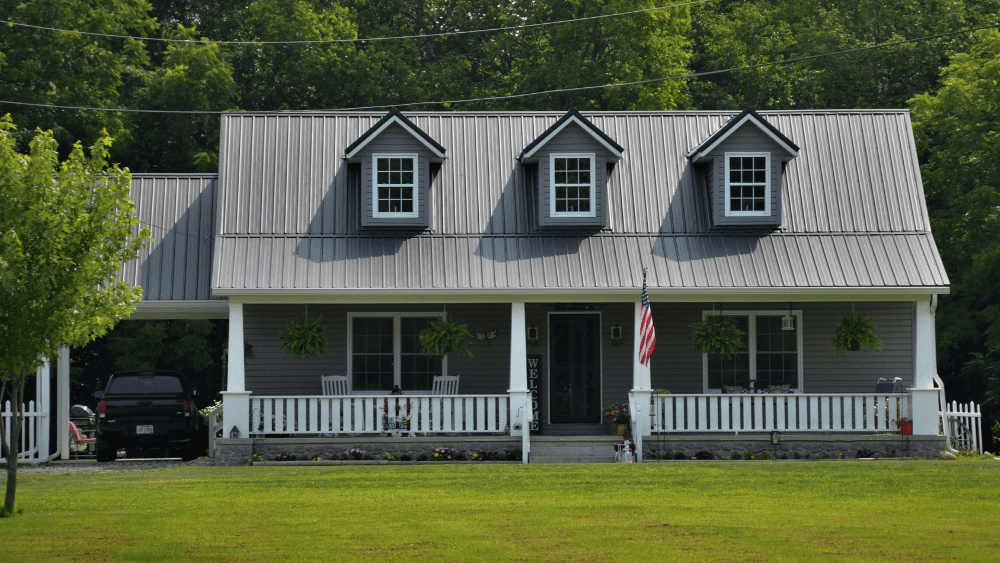
You’re 65 years old, and you’ve been in your home for 25 years. In that time, the market has gone up and up and up — and now you have substantial equity in that property. You also have lots of expenses for everyday living, and some major health care bills, too. And while you’re sitting on a lot of cash in your home, you don’t have quite enough in your pocket. So you’ve started thinking about getting a reverse mortgage. While someone in this position might be a good candidate for a loan like this, reverse mortgages are complicated products that come with plenty of potential downsides. So if you’re considering a reverse mortgage, you’ll want to take the time to understand what you’re getting into and weigh all of the potential pros and cons. This primer is a good place to start your education. A reverse mortgage is a home loan — but it’s not the standard kind most homeowners are shopping for. This type of loan is most typically for homeowners ages 62 or older who have substantial equity in their home. A reverse mortgage allows these owners to borrow against their home’s value. Think of it as a way for homeowners to tap into the wealth they accumulated in their homes over the years to pay for living expenses during retirement. Instead of making payments every month to the lender, these homeowners will receive funds from the bank instead, choosing to accept them as a line of credit, a fixed monthly payment, or in a single lump sum. Still, these loans against home equity will indeed need to be paid back eventually, though not while the borrower is still living in the home. The balance is due when the borrower moves away from the home or sells it, or when the borrower dies. And this type of loan does not lift all home-related expenses. The borrower must still pay all home insurance, property taxes, utilities, and maintenance on the property. Federal regulations on this type of loan require that the loan amount not exceed the value of the home, and that the borrower or heirs won’t be responsible for paying the difference if the home’s value ever falls below the loan’s balance. In order to make sure the borrower truly understands what this type of loan means, would-be borrowers must meet with a counselor before they can get one. Reverse mortgages come with a lot of fees, plus interest on the loan. And that can whittle down equity fast. Let’s take a look at what those costs include. Only the lump-sum option has a fixed interest rate. Otherwise, reverse mortgage rates are variable (so they change throughout the life of the loan). Just as you might expect with a traditional mortgage, there are various fees associated with a reverse mortgage, too. These include … This is the fee to establish the loan. You can expect to pay either $2,500 or 2% of the first $200,000 of the home’s appraised value (whichever is more), plus 1% of the home’s value above $200,000, not to exceed $6,000 total. These are part of a mortgage payment that goes to a mortgage servicer handling payments for the lender. For FHA home equity conversion mortgages (HECMs, which are government-insured reverse mortgages), servicing fees are capped at $35. Plan for a collection of miscellaneous fees, including credit checks, title insurance, and more. You’ll pay 2% upfront, due at closing, plus an annual premium of 0.5% each year after. This requirement applies to Home Equity Conversion Mortgages (HECMs), the most common type of reverse mortgage. Borrowers are required to attend mandatory counseling with a third-party U.S. Department of Housing and Urban Development (HUD) counselor, at the cost of about $125 (which cannot be rolled into the loan). This is the most common, most popular type of reverse mortgage loan. The borrower must be 62 or over to qualify, and you can borrow up to $765,600. These loans are federally insured and backed by HUD. Therefore, to get one of these loans, borrowers must pay insurance premiums, which flow into the Federal Housing Administration (FHA) reserves. With these loans, there’s a limit to how much borrowers can take out the first year. The borrowing maximum — known as initial principal limit — comes from a combination of the borrower’s age, the interest rate, the home’s value, and the borrower’s overall financial picture. This type of loan is the cheapest type of reverse mortgage. It’s available for low- or moderate-income homeowners, and it is designed for one purpose, like a home improvement project, designated by the lender. They are available through some nonprofit organizations as well as government agencies. This is a loan through a private company, and it is the most uncommon reverse mortgage scenario. A borrower can use a proprietary reverse mortgage for any reason, or for multiple reasons. These generally allow for a higher loan amount than the HECM program. Let’s walk through the different ways you can get paid out for your reverse mortgage. The borrower does not need to repay the loan as long as they remain living in the house. The loan becomes due after the home is sold or the death of the borrower and any eligible non-borrowing spouse (meaning a spouse who is not on the loan but qualifies to stay in the home until the time of their own passing). Most commonly, the reverse mortgage is repaid when the home is sold and the proceeds go to pay off the loan in full. This falls to either the homeowner (for instance, after moving from the home) or to the heirs (who would then receive any remaining equity in the home). If the balance on the reverse mortgage is more than the home’s value, heirs may buy the home for 95% of its appraised value. Heirs have 30 days from receiving notice to buy or sell the home, or to turn it over to the lender to satisfy the debt. Yes, a reverse mortgage creates access to cash. But it has plenty of potential pitfalls too. (And that’s why counseling is required for the HUD-backed loans). Let’s dig deeper into those upsides and downsides. A reverse mortgage can be a legitimate tool that helps senior citizens use the wealth they have accumulated over many years of homeownership. The right candidate for a reverse mortgage is someone who plans to stay in their home over the long term. And it’s best matched with someone who has taken the time to understand these complicated loan products, weigh the tradeoffs, and feel confident in their full understanding. A reverse mortgage might not be a good fit for a homeowner who plans to move in the next few years, since the loan comes due when the homeowner moves out; it just may not be worth it. It’s also not a good choice for a homeowner who intends to leave the home to heirs, from whom this type of loan takes away equity and passes along the burden of repayment. If you decide a reverse mortgage isn’t for you, you can explore a range of other options to generate or save money. Here are some to consider. If you’ve weighed all your options diligently and decided a reverse mortgage is right for you, do proceed with caution, care, and a healthy dose of skepticism. Here are some tips to help you shop for a reverse mortgage. HUD and the FBI note that reverse mortgages have increased significantly in recent years, and that creates opportunity for scammers. So the agencies urge would-be borrowers, and especially seniors, to be on high alert. In some cases, fraudsters appear to be offering investment opportunities, foreclosure or refinance assistance, or even free homes. They may target seniors in fake investment seminars, in houses of worship, through mailers, or in media, including TV and radio. The FBI offers these tips to help people avoid getting caught up in reverse mortgage scams: If you feel you are a victim of this type of fraud, submit a complaint through the FBI’s electronic tip line or through your local FBI office, file an online complaint with HUD-OIG, or call HUD’s hotline at 800-347-3735.What’s a reverse mortgage?
Costs of a reverse mortgage
Interest
Fees
Origination fee
Servicing fees
Third-party fees
Initial mortgage insurance premium
Counseling fee
The three main types of reverse mortgages
1. HUD-backed Home Equity Conversion Mortgage (HECM)
2. Single-purpose reverse mortgage
3. Proprietary reverse mortgage
How are reverse mortgages paid out?
Repayment options for reverse mortgages
Pros and cons of a reverse mortgage
Pros
Cons
Is a reverse mortgage right for you?
Reverse mortgage alternatives
Tips to shop for a reverse mortgage



